|
|
|||
|
|
|||
|
SEARCHING FOR When Judy McDonald visited Hilton Pond Center last winter on a field trip with the Environmental Education Association of South Carolina, the first question that popped into her mind dealt with student learning. Judy--a junior high science teacher at Covenant Day School in Charlotte--wanted to know if she could bring students to the Center to search for macroinvertebrates living in Hilton Pond. Since we've never done any formal macroinvertebrate surveys, we responded in the affirmative, and on 9 May Judy showed up with five of her most industrious and inquisitive seventh and eighth graders--complete with dip nets, hand lenses, test kits, sampling trays, field guides, and a boatload of energy. 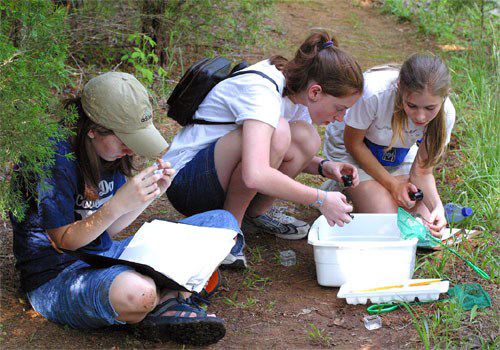
All text & photos © Hilton Pond Center This was one field trip that almost didn't occur, however, because of family illness and rain that caused it to be re-scheduled from the week before. Then, on make-up day as she was bringing her students to York, Judy's vehicle broke down at the South Carolina I-77 Welcome Center, just as she crossed the border from North Carolina. "Macroinvertebrates" is a very big name for what can be very small creatures-- tiny organisms just visible to the naked eye (hence the prefix "macro"); at that size they certainly couldn't have backbones. (Note: Some macroinvertebrates such as crayfish can be pretty big.) This catch-all group includes a wide assortment of animals from diverse taxa: insects and other arthropods (both larval and adult), worms (round, segmented, and flat), and molluscs, many of which have little in common except their--to coin a term--"macroinvertebratism." On their excursion to Hilton Pond Center, the five Covenant Day students concentrated on a narrow microhabitat--the edges of Hilton Pond itself at water depths of less than a foot. To begin, they sampled with pH paper (above right), determining the water registered about 6; thus, like most standing water in the Carolina Piedmont, the pond was slightly on the acidic side of a neutral 7. Then the students used glass thermometers to read the water temperature at a balmy 76 degrees F (24 C). After collecting these baseline data, they got down to the business of stalking their sought-after macroinvertebrates, primarily by scraping the pond bottom with small dip nets or grabbing handfuls of waterlogged leaf litter. The substrate of Hilton Pond is mostly clay and silt with lots of organic material such as dead leaves, twigs, and other plant parts. Some macroinverts eat this vegetable matter while others hide beneath it awaiting the approach of prey items. When the pond fell victim to our recently ended five-year drought, water levels dropped drastically and terrestrial plants sprouted on its banks. Working in two groups stationed at different parts of the pond, the Covenant Day students scraped the pond bottom and dumped the mucky contents of their dip nets into white plastic trays that allowed them to separate macroinverts from detritus. Their first few attempts revealed little that moved, but as the students got more proficient they began to uncover all sorts of little critters--most of which the kids had never seen before. Carefully they transferred each organism into a clear plastic box with a magnifying glass in its lid--all the better to observe tiny creatures that were hard to see otherwise.
Also present in many student samples from Hilton Pond were small aquatic snails with exceedingly thin shells--so thin the snails' innards were visible, as were their copious droppings (above left). The snails themselves were hard to find, however, since they were only about 1/8th inch long (3mm) and were nicely camouflaged against the dead, wet, dark brown leaves. Surprisingly, when we tried to photograph these molluscs, one crawled upside down with its muscular foot gliding along on the UNDERside of the water surface. Such is the strength of surface tension and the small size of the snail. The biggest macroinvertebrate the students hauled in was a true denizen of the pond--a predator capable of taking on everything from mosquito larvae to tadpoles and even small fish. This 3/4" (20mm) brawler (below right) was a juvenile insect that would one day grow up to be a dragonfly. It was hard for the students to imagine that this spindly legged, flat- headed, fuzzy- looking, stout-bodied nymph would someday become a graceful four-winged dragonfly with a long, slender body and colorful compound eyes.
We're just glad they had that extra bus and a dedicated teacher who is also a licensed bus driver. 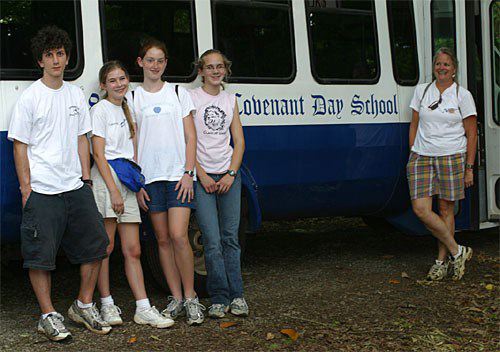 Scud drawing © Isaac Walton League Hilton Pond Center is open year-round by appointment only; visitors must be accompanied by a staff member or volunteer. School classes, conservation organizations, garden clubs, and other groups are welcome. To schedule a visit, see On-site Guided Field Trips The public is invited to register for the annual conference of The South Carolina Native Plant Society 16-18 May 2003 Winthrop University, Rock Hill SC 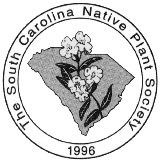 If you enjoy "This Week at Hilton Pond," please help Support Hilton Pond Center for Piedmont Natural History. It's painless, and YOU can make a difference! You may wish to consult our Index of all nature topics covered since February 2000. You can also use the on-line Search Engine at the bottom of this page. |
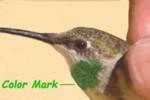 Please report your sightings of Please report your sightings ofColor-marked Ruby-throated Hummingbirds |
|
SPECIES BANDED THIS WEEK * = New species for 2003 WEEKLY BANDING TOTAL 17 species 31 individuals
YEARLY BANDING TOTAL (2003) 42 species 536 individuals
BANDING GRAND TOTAL (since 28 June 1982) 123 species 42,650 individuals
NOTABLE RECAPTURES THIS WEEK (with original banding date, sex, and current age) Ruby-throated Hummingbird (1) Blue-gray Gnatcatcher (1) Red Eyed Vireo (1) Northern Cardinal (2) Tufted Titmouse (1) Carolina Wren (1) |
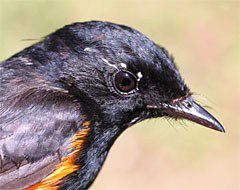 American Redstart The breeding range of this species (adult male above) is not completely known for South Carolina; it may be a local breeder since a few females with incubation patches have been banded in early August at the Center. 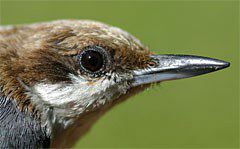 Although sexes are alike, this bird had a well-developed incubation patch, indicating it is a female; only 34 have been banded locally. 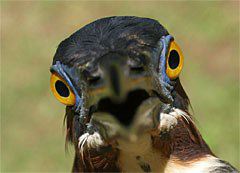
Green Heron
This adult in breeding plumage is only the 11th of its species banded at Hilton Pond Center since 1982; commonly seen here spring through fall, they undoubtedly nest on or near the property OTHER SIGHTINGS OF INTEREST
--Tailed amphibians are rare at Hilton Pond Center; only the Northern Dusky Salamander, Desmognathus fuscus, has been recorded locally. The first individual was seen ten years ago, the second this week on 8 May. |
|
Up to Top of Page Current Weather Conditions at Hilton Pond Center |
|
Hilton Pond Center for Piedmont Natural History |
 post questions for The Piedmont Naturalist |
Join the |
Search Engine for |
|
|